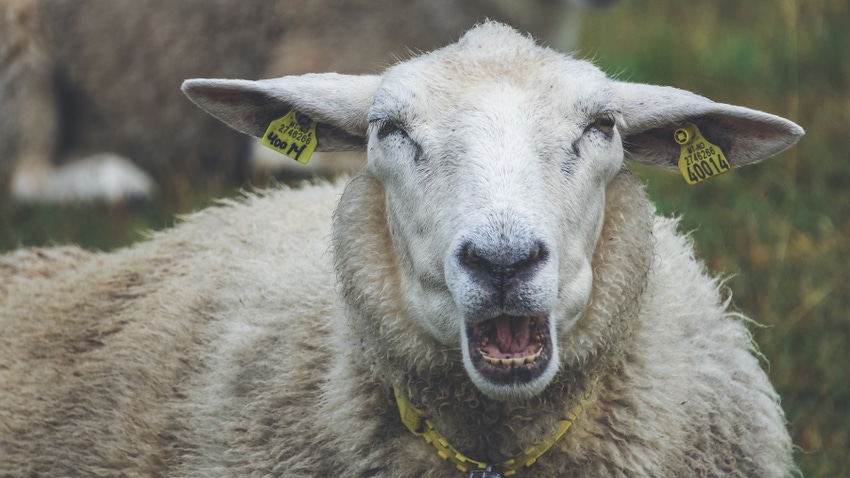August 15, 2023

Looking at a sheep’s teeth can help determine its age by examining the eight lower incisors. Learning to properly “mouth sheep” is a valuable tool to verify age when purchasing or culling ewes.
From 1 to 4 years of age, sheep will replace baby teeth with permanent ones. Beyond 4 years old, age can be estimated by incisor gaping and damage. Erosion of both incisors and molars is inevitable with aging, but proactively monitoring a flock’s dental condition can promote overall productivity.
How to mouth sheep
From birth to about 1 year of age, lambs have impermanent incisors called “milk teeth.” From 12 to 18 months of age, the first set of permanent incisors erupt. This occurs each year until the sheep is 4 years old, starting from the center teeth and going backward.
When a sheep has four permanent incisors, and the teeth have little to no wear and aren’t broken, they are considered a “solid mouth” sheep. As the sheep ages and continues wearing down its teeth, ewes that have broken, short or missing teeth are known as “broken mouthed.”
These sheep tend to be older than 5 years of age and need feedstuffs that have smaller particle size and are easier to chew. Severely broken or worn teeth lead troubles eating and, ultimately, decreased lamb, wool and milk production. A sheep may have the appearance of a broken mouth while incisors are erupting, but it’s important to recognize if the tooth is truly broken or beginning to protrude from the gumline.
A true broken mouth has other indications of wear, gapping, damage and other signs around all the teeth rather than one or two.
Effects of tooth wear
As the initial step of digestion, teeth play an integral role in animal health. Tooth wear negatively impacts the longevity of sheep.
The incisors are the easiest to evaluate, but sheep also have 24 molars — six top pairs and bottom pairs — that influence productivity. Several factors contribute to tooth damage:
Abrasive particles. Plant structure constituents called silica phytoliths have been suggested to contribute to dental wear as sheep graze. However, larger soil particles likely have a greater influence on tooth damage, especially for flocks grazing on sandy soils.
Jaw structure. Sheep with a shortened or an extended mandible have an incorrect jaw alignment. This can cause eating problems, as well as tooth damage. Jaw abnormalities are a simple culling factor.
Dentition problems cause decreased feed inefficiency due to difficulty consuming feed and adequately breaking down feed particles. Animals with broken or short incisors may struggle to bite forage when grazing and will not consume enough feed.
Ruminants are highly efficient convertors of forage to protein, due in part, to their ability to decrease feed particle size multiple times through rumination. If their molars are worn or damaged, the animal can’t adequately break down particle size for easier access by rumen microbes. This leads to decreased wool and lamb production.
In severe cases, broken-mouthed animals rapidly decrease in body condition and potentially starve. If you notice a poorly conditioned ewe, there may be a number of causes, but an easy starting place to look is checking its tooth integrity.
Mouthing is a valuable tool for making culling decisions or identifying the age of sheep. As dental problems lead to long-term loss of production and decreased animal lifespan, monitoring sheep tooth health is paramount to a productive flock. For more information on mouthing sheep look to South Dakota State University Extension’s publication Mouthing Sheep for Age.
Source: SDSU Extension
Read more about:
SheepYou May Also Like




